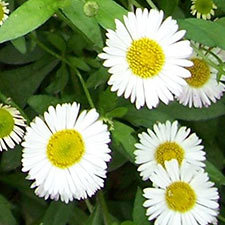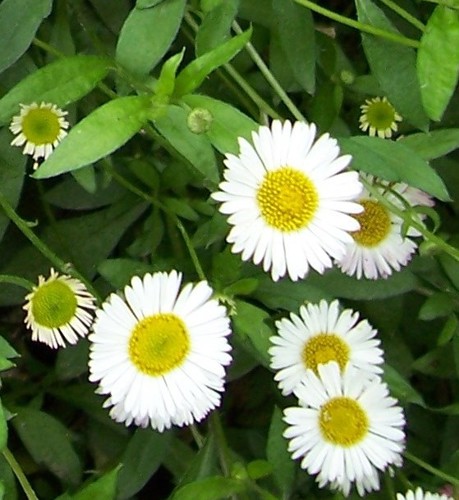 Mexican Daisy
Mexican Daisy
Common name: Mexican Daisy – sometime known as Seaside daisy
Botanical name: Erigeron karvinskianus
Management category: Advisory
Why is it a pest?
- Forms dense mats and produces huge amounts of seed that travel for long distances.
- Tolerates moderate shade to full sun, damp to drought conditions, sand to mud, and high to low temperatures.
- It replaces vulnerable native plant species.
Where is it found?
- Found in gardens, forest margins and track edges.
- Common throughout the Bay of Plenty.
What does it look like?
- A sprawling perennial daisy which grows up to 40 cm tall with fibrous roots, and long thin stems.
- Small, narrow leaves that are fragrant when crushed.
- White, white-purplish or pink daisy-like flowers with a yellow centre from January to December, followed by masses of fluffy seeds.
What are the rules?
Advisory
Council does not enforce the control of advisory species. It is landowner/occupier responsibility to manage these pests. Council may provide advice on how to manage or control advisory species if required.
How do you get rid of it?
Recommend:
- Dig out small infestations and leave on site to rot down or bag all plant material carefully and dispose of at an approved land fill facility.
- Foliar Spray – with Clopyralid (1ml/L) or Glyphosate (10 ml/L).
CAUTION: When using any herbicide or pesticide, PLEASE READ THE LABEL THOROUGHLY to ensure that all instructions and directions for the purchase, use and storage of the product, are followed and adhered to.
Read more on pest control advice, information and regulations.

